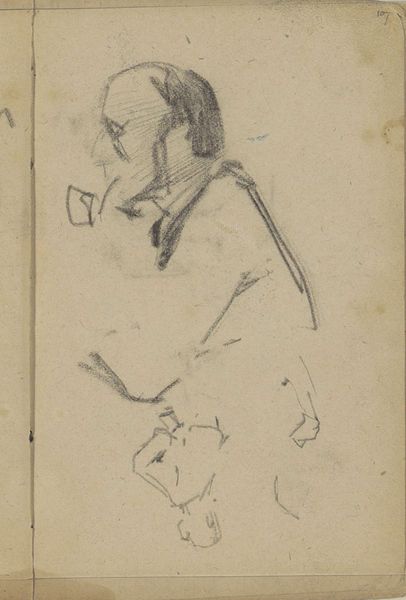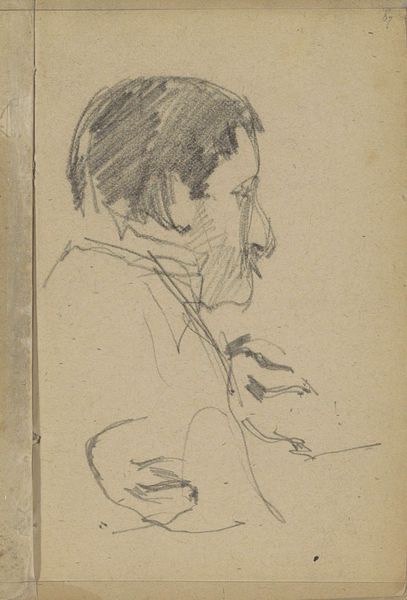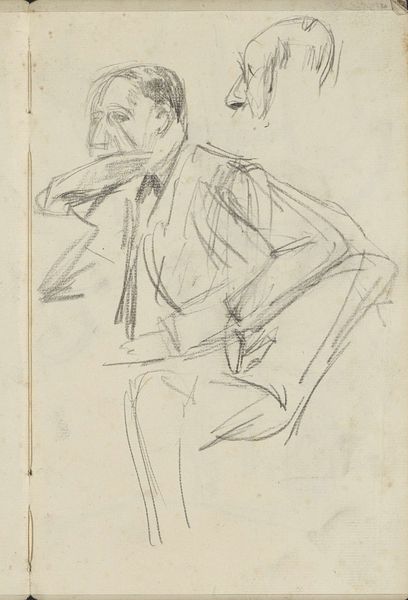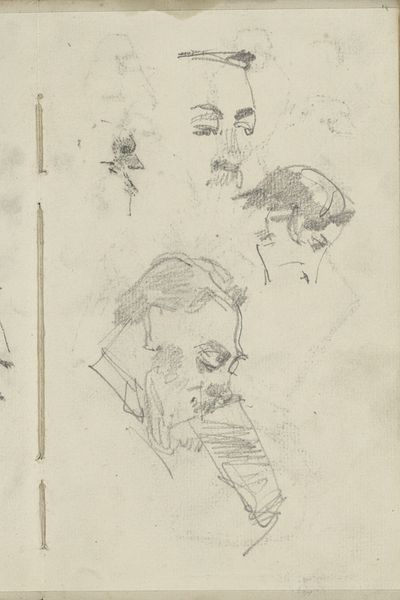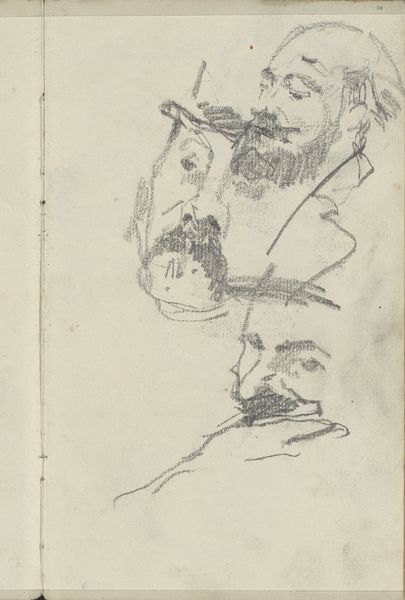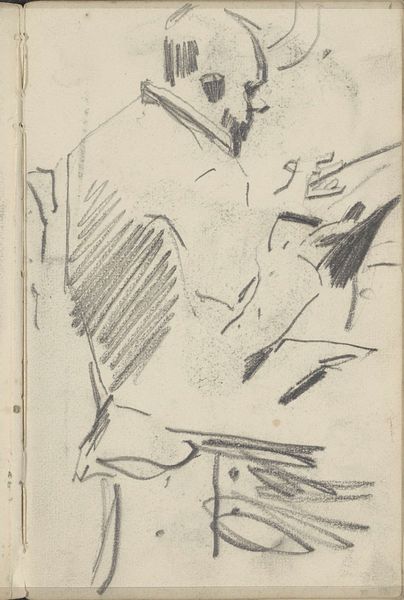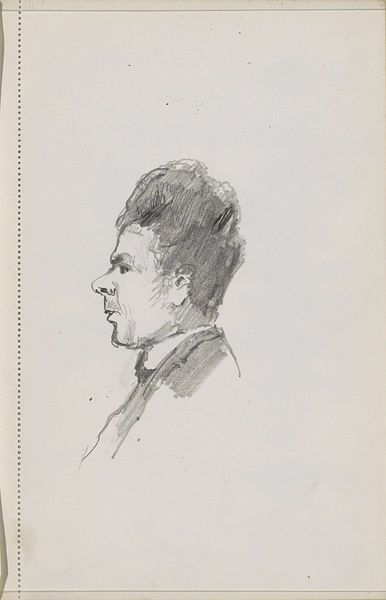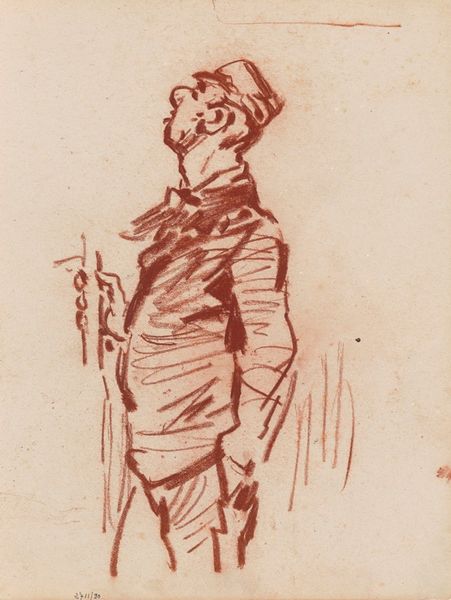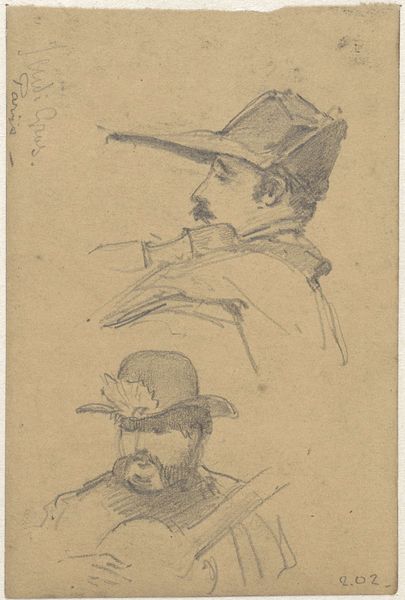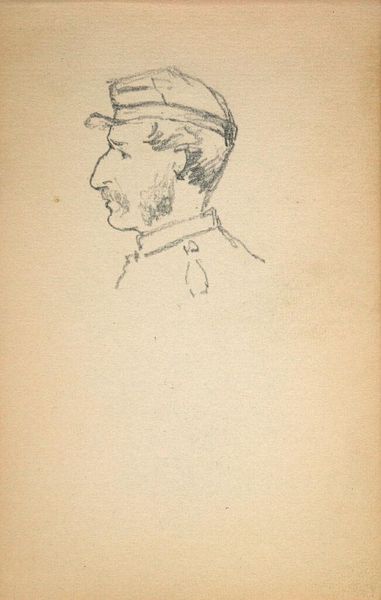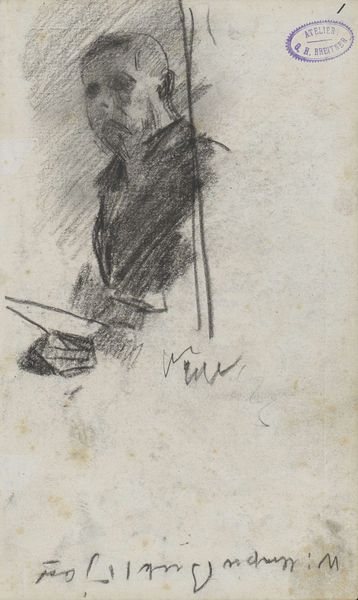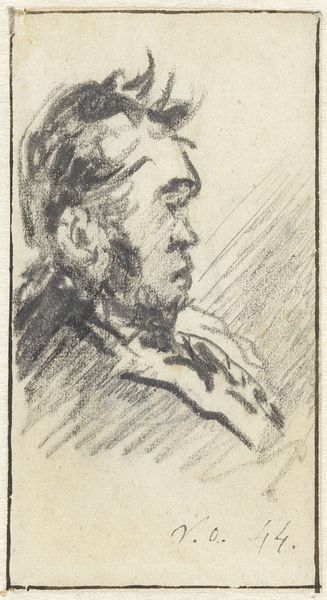
drawing, pencil
#
portrait
#
drawing
#
amateur sketch
#
toned paper
#
light pencil work
#
pencil sketch
#
sketch book
#
personal sketchbook
#
idea generation sketch
#
pen-ink sketch
#
pencil
#
sketchbook drawing
#
sketchbook art
#
realism
Copyright: Rijks Museum: Open Domain
Editor: This is George Hendrik Breitner's "Portret van een onbekende man," from between 1881 and 1883, held at the Rijksmuseum. It's a pencil drawing on toned paper. The loose lines and casual feel suggest it was done quickly. What strikes you most about this piece? Curator: It's interesting to consider the paper itself – its texture, its origin. Was it mass-produced, or a handmade sheet, reflecting a different level of artisanal labor? How does the 'toned' quality of the paper affect the pencil work applied on top? And think about the graphite, where did that material originate, who mined it and processed it, what was Breitner’s relationship to that industry? The image itself almost becomes secondary to the network of production behind it. Editor: That's a fascinating way to approach it! I was more focused on the figure, wondering about his identity. Curator: Right, but 'identity' itself is a product, isn't it? His clothes, the pipe – they speak to class, leisure, access to certain goods. Even Breitner's *ability* to sit and sketch him reveals a social and economic hierarchy at play. What does it mean that this “onbekende man” and the materials required for his portrait have histories we might never recover? Editor: So you're saying the drawing itself is less important than the story of how it was made? Curator: Not less important, but inseparable from it. The skill is evident, but the act of sketching, the materials employed, all have stories embedded in them – stories of labor, consumption, and the artist's position within that system. That paper wasn't free. The pencil had to be manufactured. Editor: I see. Thinking about all that definitely adds a new dimension to appreciating even a seemingly simple sketch like this. Curator: Indeed! We can find much richer interpretations when thinking beyond the artwork to encompass the system which supports its existence.
Comments
No comments
Be the first to comment and join the conversation on the ultimate creative platform.
